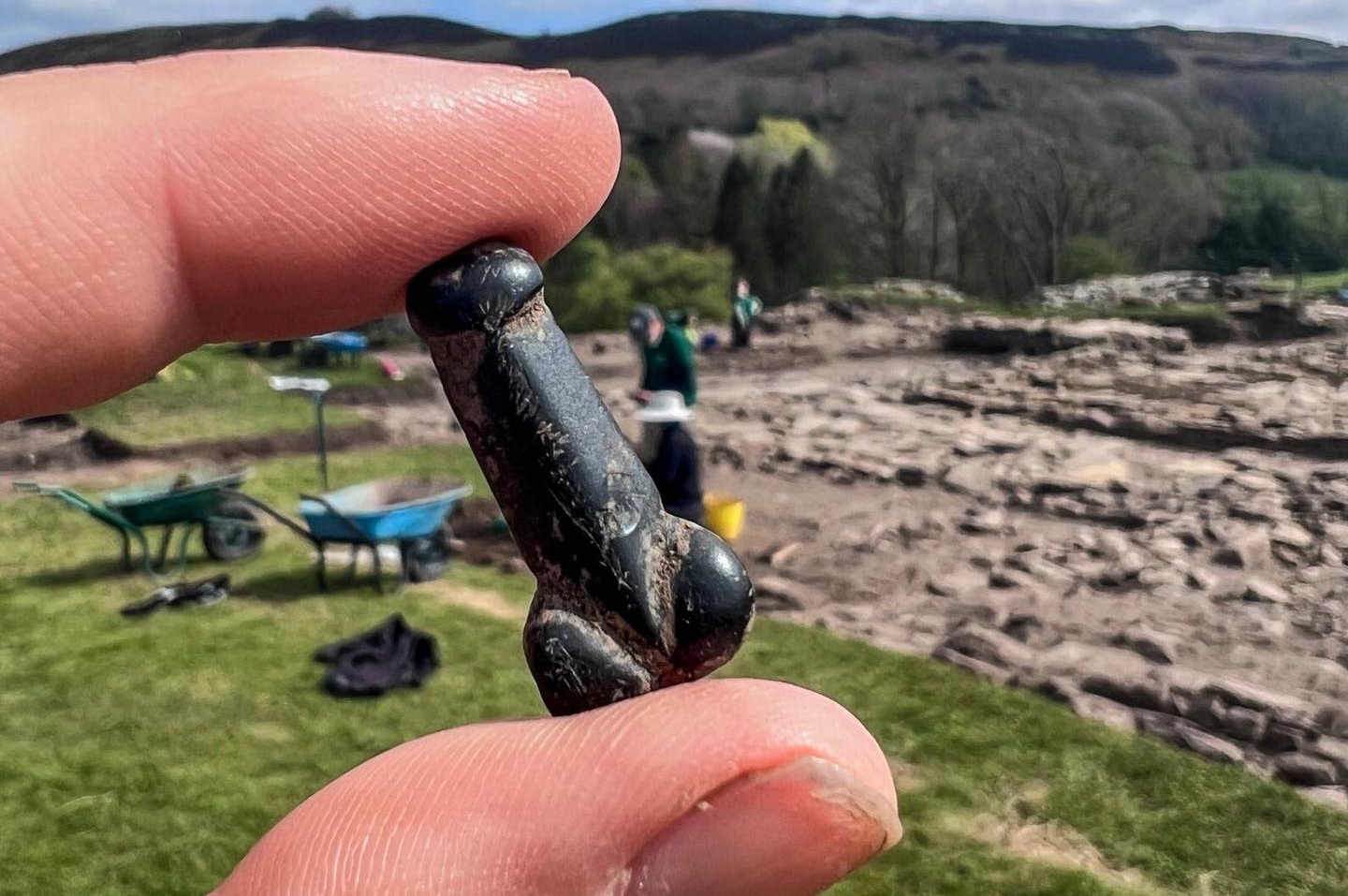Excavations at Vindolanda near Hadrian’s Wall have unearthed a miniature phallus pendant.
Vindolanda, meaning “white field” or “white moor,” was a Roman auxiliary fort guarding the Stanegate road just south of Hadrian’s Wall.
Between AD 85 and AD 370, no fewer than nine timber and stone forts were built on the site, making Vindolanda one of Britain’s most complex archaeological sites and a time capsule of Roman military life on the frontier.
Vindolanda remains an active archaeological site (celebrating their 55th anniversary of being the Vindolanda Charitable Trust), where excavations have uncovered thousands of remarkably preserved shoes, textiles, wooden artefacts, and the famous Vindolanda tablets – the oldest surviving written documents from Roman Britain.
In the latest season of excavations, archaeologists have unearthed a miniature phallus pendant made from jet in the remains of a 4th century wall.
The Roman’s believed that the phallus was the embodiment of the masculine generative power and provided protection, fertility, and good fortune. Phallic imagery appears throughout the Roman world—in sculptures, mosaics, frescoes, and portable items such as pendants and bullae.
Along the corridor of Hadrian’s Wall alone, there are 59 known phalli in various forms, whether incised, relief, or sculpture depictions that are grouped into nine morphological traits: the rocket, the hammer, the kinky-winky, the splitcock, the pointer, the double-dong, running hard, the beast, and the lucky dip.
The miniature phallus pendant follows on from a 2024 discovery at Vindolanda where archaeologists discovered a phallus symbol carved into a stone slab.
The 2025 excavations are a continuation of a research project from 2024 to 2028 that focuses on the last remaining turfed area within the boundaries of the final stone fort constructed at Vindolanda.
Header Image Credit : Vindolanda Charitable Trust
Sources : Vindolanda Charitable Trust





